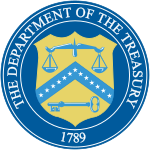Treasurer of the United States
| Treasurer of the United States | |
|---|---|
since September 12, 2022 | |
| United States Department of Treasury | |
| Reports to | United States Secretary of the Treasury United States Deputy Secretary of the Treasury |
| Seat | Treasury Building Washington, D.C. |
| Appointer | President of the United States |
| Term length | No fixed term |
| Formation | May 14, 1777 |
| First holder | Michael Hillegas |
The treasurer of the United States is an officer in the United States Department of the Treasury who serves as the custodian and trustee of the federal government's collateral assets and the supervisor of the department's currency and coinage production functions. As of September 12, 2022, the treasurer is Marilynn Malerba, who is the first Native American to hold the office.[1]
Responsibilities
[edit]By law, the treasurer is the depositary officer of the United States with regard to deposits of gold, special drawing rights,[2] and financial gifts to the Library of Congress.[3] The treasurer also directly oversees the Bureau of Engraving and Printing (BEP) and the United States Mint, which respectively print and mint U.S. currency and coinage. In connection to the influence of federal monetary policy on currency and coinage production, the treasurer liaises on a regular basis with the Federal Reserve.[4]
The duty perhaps most widely associated with the treasurer of the United States is affixing a facsimile signature to all Federal Reserve notes. Federal law requires both the treasurer's signature and the treasury secretary's countersignature for Federal Reserve notes to be considered legal tender.[5]
Moreover, the treasurer serves as a senior advisor and representative of the Treasury Department on behalf of the secretary in the areas of community development and public engagement.[4]
History
[edit]Creation
[edit]On July 29, 1775, long before the Department of the Treasury ever existed, the Second Continental Congress established the Treasury Office to manage revolutionary wartime finances. Congress chose George Clymer and Michael Hillegas as joint treasurers of the United Colonies. On August 6, 1776, however, Clymer resigned from his post, thus making Hillegas the sole incumbent. The position received its current name on May 14, 1777, while Hillegas was still in office.[6]
Change in functions over the years
[edit]The post of U.S. treasurer predates the United States Constitution. The treasurer was originally charged with the receipt and custody of all government funds independent of the treasury secretary, not unlike today's elected state treasurers. Beginning in 1939, the Office of the Treasurer and its cash management activities were brought under the direction of a broader Fiscal Service, one that also coordinated governmentwide accounting and debt management. Later in 1974, the cash management function in its entirety was transferred from the treasurer to what is now known as the Bureau of the Fiscal Service as a cost-saving measure.[7] Responsibility for oversight of the Bureau of Engraving and Printing (BEP) and the United States Mint was later assigned to the treasurer in 1981.[8][6] In 1994, the treasurer was also named National Honorary Director of the U.S. Savings Bonds Campaign and therefore assigned the task of promoting - as opposed to managing - the program.[9]
More recently, the requirement of the United States Senate confirmation for the appointment was dropped in August 2012.[10]
Since the resignation of Elizabeth Rudel Smith in 1962, the non-continuous total length of time the office has been vacant is nearly 4,700 days, nearly thirteen years, while in the 180+ years prior to that, such time totaled less than a year.
Female officeholders
[edit]Georgia Neese Clark Gray became treasurer on June 21, 1949, making her the first woman to hold the office.[11] Since then, every subsequent treasurer has been a woman,[11] and several of those women have also been Hispanic, starting with Romana Acosta Bañuelos in 1971.[12]
List of treasurers
[edit]| No. | Name | Term of office | President(s) served under |
|---|---|---|---|
| 1 | 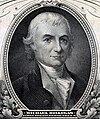 Michael Hillegas |
July 29, 1775 – September 11, 1789 (14 years, 44 days) |
George Washington (also served under Confederation Congress) |
| Hillegas served jointly with George Clymer until August 6, 1776. The title of the office was "Treasurer of the United Colonies" until May 14, 1777.[6] | |||
| 2 | Samuel Meredith | September 11, 1789 – December 1, 1801 (12 years, 81 days) |
George Washington John Adams Thomas Jefferson |
| 3 |  Thomas T. Tucker |
December 1, 1801 – May 2, 1828 (26 years, 153 days) (served the longest term) |
Thomas Jefferson James Madison James Monroe John Quincy Adams |
| 33 days vacant | |||
| 4 | 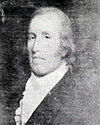 William Clark |
June 4, 1828 – May 26, 1829 (356 days) |
John Quincy Adams Andrew Jackson |
| 5 | John Campbell | May 26, 1829 – July 20, 1839 (10 years, 55 days) |
Andrew Jackson Martin Van Buren |
| 2 days vacant | |||
| 6 | William Selden | July 22, 1839 – November 23, 1850 (11 years, 124 days) (served under the most presidents) |
Martin Van Buren William Henry Harrison John Tyler James K. Polk Zachary Taylor Millard Fillmore |
| 4 days vacant | |||
| 7 |  John Sloane |
November 27, 1850 – April 1, 1853 (2 years, 125 days) |
Millard Fillmore Franklin Pierce |
| 3 days vacant | |||
| 8 | Samuel L. Casey | April 4, 1853 – December 22, 1859 (6 years, 262 days) |
Franklin Pierce James Buchanan |
| 68 days vacant | |||
| 9 |  William C. Price |
February 28, 1860 – March 21, 1861 (1 year, 21 days) |
James Buchanan Abraham Lincoln |
| 10 |  Francis E. Spinner |
March 16, 1861 – July 30, 1875 (14 years, 136 days) |
Abraham Lincoln Andrew Johnson Ulysses S. Grant |
| 11 |  John C. New |
June 30, 1875 – July 1, 1876 (1 year, 1 day) |
Ulysses S. Grant |
| 12 | 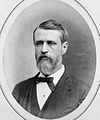  A. U. Wyman |
July 1, 1876 – June 30, 1877 (364 days) |
Ulysses S. Grant Rutherford B. Hayes |
| 13 |  James Gilfillan |
July 1, 1877 – March 31, 1883 (5 years, 273 days) |
Rutherford B. Hayes James A. Garfield Chester A. Arthur |
| 14 |   A. U. Wyman |
April 1, 1883 – April 30, 1885 (2 years, 29 days) |
Chester A. Arthur Grover Cleveland |
| 15 | Conrad N. Jordan |
May 1, 1885 – March 23, 1887 (1 year, 326 days) |
Grover Cleveland |
| 62 days vacant | |||
| 16 | 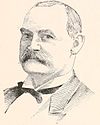 James W. Hyatt |
May 24, 1887 – May 10, 1889 (1 year, 351 days) |
Grover Cleveland Benjamin Harrison |
| 17 | 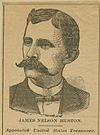 James N. Huston |
May 11, 1889 – April 24, 1891 (1 year, 348 days) |
Benjamin Harrison |
| 18 |  Enos H. Nebeker |
April 25, 1891 – May 31, 1893 (2 years, 36 days) |
Benjamin Harrison Grover Cleveland |
| 19 | 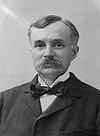 Daniel N. Morgan |
June 1, 1893 – June 30, 1897 (4 years, 29 days) |
Grover Cleveland William McKinley |
| 20 | 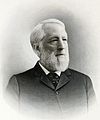 Ellis H. Roberts |
July 1, 1897 – June 30, 1905 (7 years, 364 days) |
William McKinley Theodore Roosevelt |
| 21 | Charles H. Treat |
July 1, 1905 – October 30, 1909 (4 years, 121 days) |
Theodore Roosevelt William Howard Taft |
| 22 | 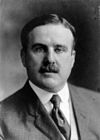 Lee McClung |
November 1, 1909 – November 21, 1912 (3 years, 20 days) |
William Howard Taft |
| 23 | 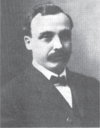 Carmi A. Thompson |
November 22, 1912 – March 31, 1913 (129 days) (served the shortest term) |
William Howard Taft Woodrow Wilson |
| 24 | 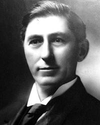 John Burke |
April 1, 1913 – January 5, 1921 (7 years, 279 days) |
Woodrow Wilson |
| 117 days vacant | |||
| 25 |  Frank White |
May 2, 1921 – May 1, 1928 (6 years, 365 days) |
Warren G. Harding Calvin Coolidge |
| 30 days vacant | |||
| 26 |  Harold Theodore Tate |
May 31, 1928 – January 17, 1929 (231 days) |
Calvin Coolidge |
| 27 | W. O. Woods |
January 18, 1929 – May 31, 1933 (4 years, 133 days) |
Calvin Coolidge Herbert Hoover Franklin Delano Roosevelt |
| 28 |  William Alexander Julian |
June 1, 1933 – May 29, 1949 (15 years, 362 days) |
Franklin D. Roosevelt Harry S. Truman |
| 23 days vacant | |||
| 29 | 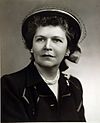 Georgia Neese Clark |
June 21, 1949 – January 27, 1953 (3 years, 220 days) |
Harry S. Truman Dwight D. Eisenhower |
| 30 |  Ivy Baker Priest |
January 28, 1953 – January 29, 1961 (8 years, 1 day) |
Dwight D. Eisenhower John F. Kennedy |
| 31 |  Elizabeth Rudel Smith |
January 30, 1961 – April 13, 1962 (1 year, 73 days) |
John F. Kennedy |
| 265 days vacant | |||
| 32 |  Kathryn O'Hay Granahan |
January 3, 1963 – November 22, 1966 (3 years, 323 days) |
John F. Kennedy Lyndon B. Johnson |
| 898 days vacant | |||
| 33 | Dorothy Andrews Elston[13] | May 8, 1969 – July 3, 1971 (2 years, 56 days) |
Richard Nixon |
| 167 days vacant | |||
| 34 |  Romana Acosta Bañuelos |
December 17, 1971 – February 14, 1974 (2 years, 59 days) |
Richard Nixon |
| 127 days vacant | |||
| 35 | Francine Irving Neff |
June 21, 1974 – January 19, 1977 (2 years, 212 days) |
Richard Nixon Gerald Ford |
| 236 days vacant | |||
| 36 | 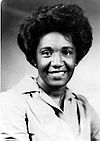 Azie Taylor Morton |
September 12, 1977 – January 20, 1981 (3 years, 130 days) |
Jimmy Carter |
| 56 days vacant | |||
| 37 | Angela Marie Buchanan |
March 17, 1981 – July 5, 1983 (2 years, 110 days) |
Ronald Reagan |
| 79 days vacant | |||
| 38 |  Katherine D. Ortega |
September 22, 1983 – July 1, 1989 (5 years, 282 days) |
Ronald Reagan George H. W. Bush |
| 163 days vacant | |||
| 39 | Catalina Vasquez Villalpando |
December 11, 1989 – January 20, 1993 (3 years, 40 days) |
George H. W. Bush |
| 405 days vacant | |||
| 40 | 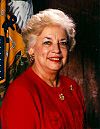 Mary Ellen Withrow |
March 1, 1994 – January 20, 2001 (6 years, 325 days) |
Bill Clinton |
| 208 days vacant | |||
| 41 |  Rosario Marin |
August 16, 2001 – June 30, 2003 (1 year, 318 days) |
George W. Bush |
| 569 days vacant | |||
| 42 | 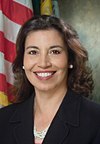 Anna Escobedo Cabral |
January 19, 2005 – January 20, 2009 (4 years, 1 day) |
George W. Bush |
| 198 days vacant | |||
| 43 |  Rosa Gumataotao Rios |
August 6, 2009 – July 11, 2016 (6 years, 340 days) |
Barack Obama |
| 343 days vacant | |||
| 44 | 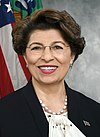 Jovita Carranza |
June 19, 2017 – January 14, 2020 (2 years, 209 days) |
Donald Trump |
| 972 days vacant | |||
| 45 |  Marilynn Malerba |
September 12, 2022 – present (2 years, 119 days) |
Joe Biden |
See also
[edit]References
[edit]- ^ Hussein, Fatima (June 19, 2022). "Malerba sworn in as 1st Native American in US Treasurer post". apnews.com. Archived from the original on September 15, 2022. Retrieved September 13, 2022.
- ^ : Deposits of gold coin, gold certificates, and Special Drawing Right certificates with United States Treasurer
- ^ : Funds of Library of Congress Trust Fund Board; management of
- ^ a b "Treasurer". home.treasury.gov. U.S. Department of the Treasury. Archived from the original on August 31, 2022. Retrieved September 1, 2022.
- ^ Rappeport, Alan (December 8, 2022). "Yellen Is First Female Treasury Secretary With Signature on U.S. Dollar". The New York Times. Archived from the original on December 9, 2022. Retrieved December 9, 2022.
By tradition, the treasurer must sign the money along with the Treasury secretary. Both signatures are engraved onto plates at the Bureau of Engraving and Printing, where they are printed and submitted to the Federal Reserve, which determines what currency will be added to circulation.
- ^ a b c "History of the Treasury". home.treasury.gov. U.S. Department of the Treasury. Archived from the original on August 29, 2022. Retrieved September 1, 2022.
- ^ Bureau of the Fiscal Service. "Our History". U.S. Department of the Treasury. Retrieved December 1, 2022.
- ^ "Records of the Treasurer of the United States". archives.gov. National Archives. August 15, 2016. Archived from the original on May 15, 2022. Retrieved September 1, 2022.
- ^ "Duties and Functions FAQs". U.S. Department of the Treasury. Retrieved December 1, 2022.
- ^ "Presidential Appointment Efficiency and Streamlining Act of 2011" (PDF). GovInfo. August 10, 2012. Archived (PDF) from the original on October 6, 2020. Retrieved August 31, 2023.
- ^ a b Cruz, Lenika (August 13, 2014). "Why Have All the U.S. Treasurers Since 1949 Been Women?". theatlantic.com. Archived from the original on August 14, 2014. Retrieved August 14, 2014.
- ^ Hocking, Bree (February 15, 2005). "Latina Treasurer Trend Creates a Mystery in D.C." rollcall.com. Archived from the original on January 27, 2021. Retrieved February 16, 2005.
- ^ "Treasurers of the United States". Archived from the original on April 6, 2021. Retrieved August 2, 2018.
External links
[edit]- Official website
- "Treasurers of the United States". History of the Treasury. United States Department of the Treasury. Retrieved April 16, 2022.



